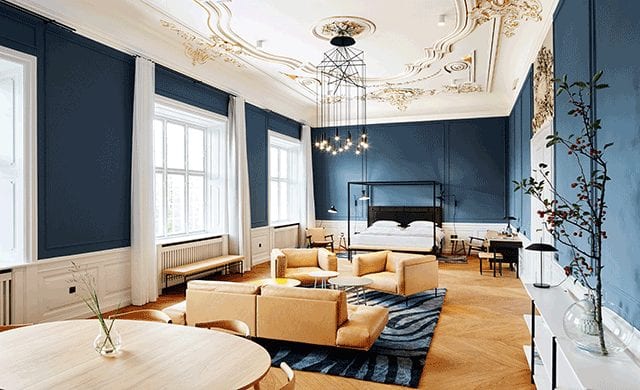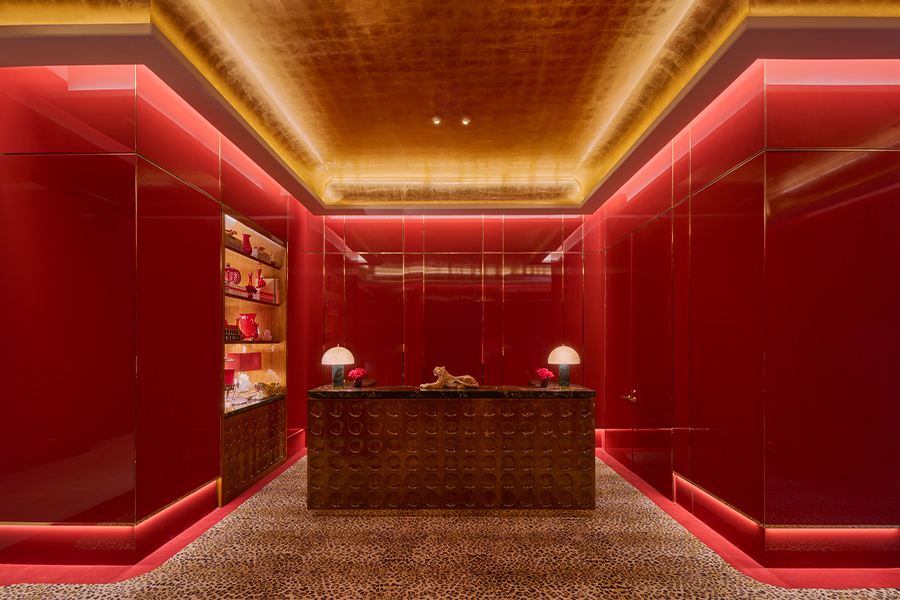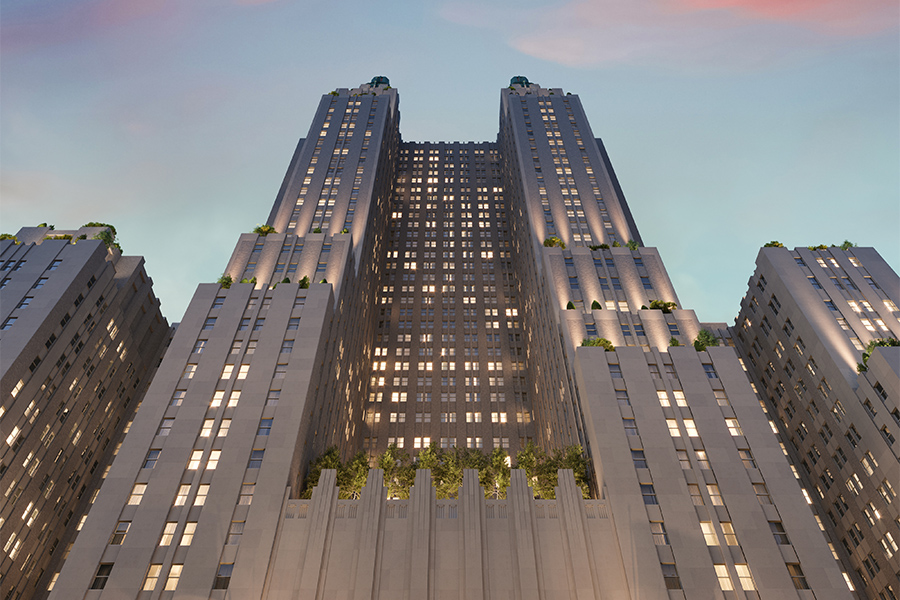Nagging a table at Copenhagen’s old Noma, a converted warehouse on the water, was a maddening task. It’s no less arduous a process at the 2018 incarnation of René Redzepi’s venerated Nordic restaurant, transformed from an abandoned sea mine depot on the border of the hippie Christiania neighborhood by local architecture powerhouse Bjarke Ingels Group (BIG). Plans for both the menu and design of Noma 2.0 were closely guarded secrets in advance of this winter’s opening, fostering intrigue and suspense along the way. Although a revamped Noma is arguably one of the city’s buzziest developments, there are numerous other debuts fueled by smart design that delineate the Danish capital’s dynamism.
Among the newcomers to Copenhagen’s saturated culinary sphere is Løgismose at the department store Illum, a gourmet grocery-café-wine shop mash-up from Jensen Retail Group. The three-in-one concept is a good example of stores, restaurants, and hotels separating “themselves from the norm to create their own identity,” says Thomas Jensen, owner of the Copenhagen design agency. Here, wood melds with steel, perforated furniture on the terrace echoes shelving patterns, and a reddish-brown linoleum floor references the original Løgismose location set in a former warehouse. “The old school white tiles in the background make it look nice and clean, while the front of the desk frames the kitchen by letting it float,” adds Jensen. Thonet chairs and a swathe of saturated blue give the eatery an airy, Parisian feel.
Longtime neighborhood joint Les Trois Cochons, part of the Copenhagen Food Collective portfolio, straddles Vesterbro and Frederiksberg on a charming street aptly dubbed Little Paris. “The window tables are front-row seats to the busy life of Værnedamsvej,” says Cecilie Friis-Mikkelsen, a designer at Københavns Møbelsnedkeri, the local furniture company that recently refreshed the interior of this one-time butcher shop. Now, vintage green wall tiles and a checkerboard floor are buoyed by white Carrara marble, raw steel, dark oak-fumed tabletops, and brown leather banquettes. A bread station, with a decidedly “more modern shape and style” than France’s traditional versions, is the centerpiece, Friis-Mikkelsen points out.
Food is one way of luring visitors to Copenhagen, but the city also flourishes culturally. Consider performance venue Royal Arena completed last year by local architects 3XN. Its peekaboo façade of undulating timber fins is arresting, as is its podium containing a staircase and plazas meant to engage the community. Even Tivoli Gardens, the storied, 19th-century amusement park, has a new pavilion designed by New York architects Pei Cobb Freed & Partners. Dubbed Tivoli Hjørnet, it beckons from the street with an animated glass wall—a nod to the fortification walls and moat that once surrounded the city—while stepped terracotta terraces on the garden side look out on the park. Containing a food hall and retail outlets, it’s also home to 21 additional rooms with balconies for the now 38-room Nimb Hotel, dressed with four-poster beds and antique furnishings by René Jasper Thomsen, founder of local studio JasperJasper.
A few unconventional accommodations also sprouted up in 2017, revealing Copenhagen’s free-spirited mentality. Vipp, the Danish retailer known for design-forward renditions of products like soap dishes and trash bins, took a deeper plunge into the hospitality arena with Vipp Loft. Located above the company’s Islands Brygge office, locally based Studio David Thulstrup successfully carved a large, open space into fluid, intimate zones and outfitted the retreat with a palette of gray, green, and mustard. Black perforated metal stairs complement an array of metal art pieces. “We’re on the brink of a new movement for Scandinavian design. The same values are still there, but we’re truly coming out from under the long shadow of midcentury modernism,” explains Thulstrup. “We are not only minimalistic and Nordic, we are daring, colorful, and experimenting.”
That certainly holds true at the recently refurbished 288-room Skt. Petri in the Latin Quarter, where a vibrant emerald and purple jewel-toned color scheme stands in stark contrast to the usual neutral tones synonymous with Scandinavian design. Vilhelm Lauritzen’s building from 1928 now features the contemporary touch of Oslo-based designer Anemone Wille Våge, mixing materials like terrazzo and chenille, as well as heaps of works from Danish artists such as the group Superflex. Sister to the Stockholm original, there is also the Nobis, a 77-key property designed by Swedish architect Gert Wingårdh in the former home of the Royal Danish Conservatory of Music that flaunts its 1903 architectural bones throughout, notably in the wood and marble staircase. Inspired by a Le Corbusier monastery, Wingårdh turned to a roster of natural materials, including stone and glass, while calming wood parquet floors in the guestrooms are brightened by blue-green walls.
But perhaps the boldest example of new Scandinavian design is on display at the Krane, cleverly situated within a circa-1944 coal crane on Nordhavn Harbour. Remarkably, Copenhagen’s Arcgency converted it into a sole guestroom, meeting space, and spa. Dominated by varying shades of black, it features a Dinesen Douglas fir floor and leather, stone, and steel. Arcgency also made functional, custom furniture pieces that effortlessly fold away. Founding partner Mads Møller says that sleeping “in the glass box on a Danish summer night, opening up the sliding doors, the breeze and light combined with the interior, the raw crane elements, and the view of the ocean” are highlights of the experience.



